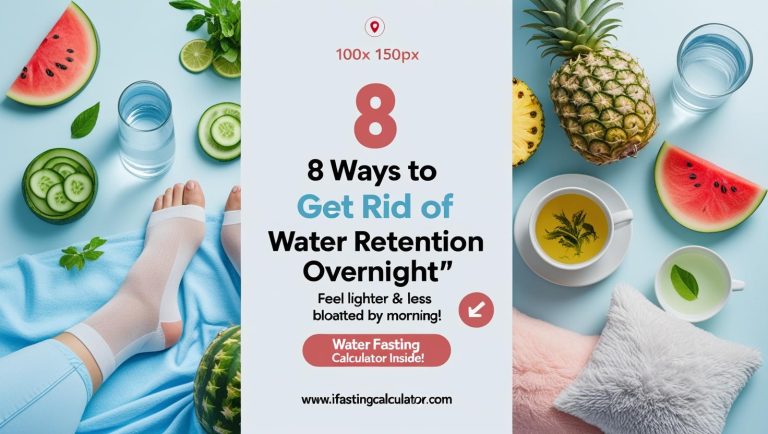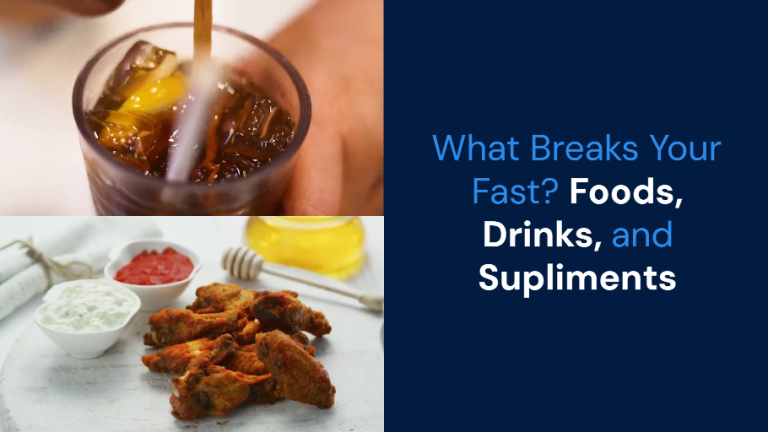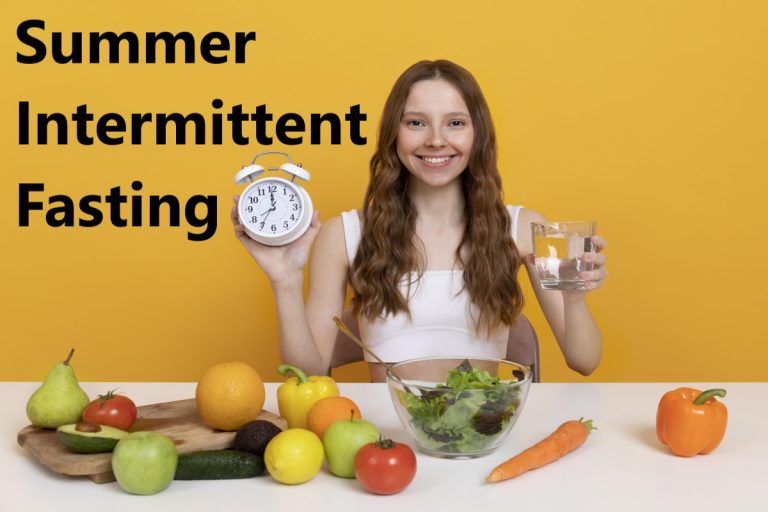How To Do The 16-8 Intermittent Fasting?
How to do the 16-8 intermittent fasting? Intermittent fasting has gained popularity as a simple and effective way to manage weight, improve health, and enhance overall well-being. One of the most common methods is the 16:8 intermittent fasting approach. This guide will explain 16:8 fasting, how to choose an eating window, what to eat, potential benefits, and drawbacks, along with some top tips to get started.
What is 16:8 Intermittent Fasting?
The 16/8 method, also known as the time-restricted feeding (TRF) regimen, involves eating all your meals within an 8-hour window and fasting for the remaining 16 hours of the day. This can be adjusted to fit your lifestyle, but a common schedule is to eat between noon and 8 pm, and then fast from 8 pm to noon the next day.
By restricting your eating window, you allow your body to focus on burning fat for fuel, rather than relying on glucose from food. This can lead to efficient fat loss, improved insulin sensitivity, and even increased human growth hormone (HGH) production. Plus, it can be a great way to simplify your eating habits and reduce overall calorie intake. To help you stay on track, consider using our Intermittent Fasting Timer for accurate tracking and reminders.
Unlike many traditional diets, the 16:8 fasting method is flexible, easy to follow, and can yield significant health benefits with minimal disruption to daily life. To track your fasting progress and estimate potential weight loss, you can use a water fasting weight loss calculator.
How to Choose Your 16:8 Eating Window
Choosing the right eating window is crucial for success with intermittent fasting. Since everyone has different schedules and preferences, it’s essential to select an 8-hour window that aligns with your lifestyle. Here’s a step-by-step guide to help you select the perfect eating window:
Experiment with different windows: Try out different eating windows to see what works best for you. You may want to start with a conservative window (e.g., 10 am to 6 pm) and adjust as needed.
Reflect on your lifestyle: Consider your daily routine, work schedule, and personal preferences. If you’re not a morning person, you may want to start your eating window later in the day.
Identify your most active hours: Choose an eating window that coincides with your most active periods. For example, if you’re most energetic in the morning and afternoon, you may want to eat between 9 am and 5 pm.
Think about your meal frequency: Decide how many meals you want to fit within your 8-hour eating window. If you prefer to eat three meals, you may want to start your window earlier. If you prefer two meals, you can start later.
Consider your sleep schedule: Ensure that your eating window doesn’t interfere with your sleep. Finish eating at least 2-3 hours before bedtime to allow for proper digestion and relaxation.
Some popular 16:8 eating windows to consider:
- 7 AM – 3 PM: Ideal for early risers who prefer breakfast and an early dinner.
- 9 AM – 5 PM: Great for those who like a balanced breakfast, lunch, and an early dinner.
- 12 PM – 8 PM: One of the most popular choices, allowing for lunch, dinner, and snacks.
- 2 PM – 10 PM: Suitable for late eaters or night shift workers.
Remember, the key is to find an eating window that suits your lifestyle, preferences, and schedule. Be flexible, and don’t be afraid to adjust your window as needed. With time, you’ll find the perfect rhythm that works for you and helps you achieve your health goals. You can also set reminders on your phone or use our free intermittent fasting timer to keep track of your eating window.
What to Eat During Intermittent Fasting 16/8
To maximize the benefits of intermittent fasting, focus on consuming nutrient-dense foods during your eating window. A well-balanced diet ensures you stay energized and support your overall health.
Focus on Whole Foods:
- Protein-rich foods: Include lean meats, fish, eggs, tofu, legumes, and nuts to help build and repair muscles.
- Vegetables: Load up on dark leafy greens, broccoli, bell peppers, carrots, and other colorful vegetables that are rich in fiber, vitamins, and minerals.
- Fruits: Enjoy a variety of fruits like berries, citrus fruits, apples, and pears, which are rich in antioxidants, fiber, and natural sugars.
- Whole grains: Choose whole grains like brown rice, quinoa, whole wheat bread, and whole grain pasta, which provide sustained energy and fiber.
- Healthy fats: Nuts, seeds, avocados, and olive oil are all great sources of healthy fats that support heart health and satisfaction.
Beverages:
- Water: Stay hydrated with plenty of water throughout your eating window.
- Herbal teas: Enjoy caffeine-free herbal teas like peppermint, chamomile, or hibiscus tea.
- Black coffee: If you’re a coffee lover, you can have black coffee during your eating window, but be mindful of your overall caffeine intake.
What to Avoid:
- Added sugars: Limit or avoid sugary drinks, desserts, and refined carbohydrates that can cause a spike in blood sugar and insulin resistance.
- Refined carbohydrates: Try to limit or avoid white bread, sugary snacks, and processed foods that are high in empty calories.
- Processed meats: Choose nitrate-free, low-sodium processed meats like turkey or chicken breast, and limit or avoid sausages and bacon.
Tips for a Smooth Transition:
- Start with a balanced meal: Begin your eating window with a balanced meal that includes protein, healthy fats, and complex carbohydrates.
- Eat until satisfied: Stop eating when you feel satisfied, rather than stuffed.
- Listen to your body: Pay attention to your hunger and fullness cues, and adjust your food intake accordingly.
- Stay hydrated: Drink plenty of water throughout your eating window to help control hunger and support overall health.
By following these guidelines, you’ll be able to nourish your body, satisfy your hunger, and make the most of your 16:8 fasting window. Remember, it’s all about finding a sustainable, balanced approach that works for you in the long term.
Potential Benefits of 16:8 Intermittent Fasting
Following the 16:8 fasting method can lead to various health benefits, including:
- Weight Loss: Reducing the eating window often leads to lower calorie intake, promoting fat loss. (source)
- Better Blood Sugar Control: Intermittent fasting may help lower insulin levels and improve insulin sensitivity, reducing the risk of diabetes.
- Improved Heart Health: Fasting can support healthy cholesterol levels and reduce inflammation.
- Enhanced Brain Function: Some studies suggest intermittent fasting may improve memory and cognitive function.
- Simpler Meal Planning: Eating within a specific time frame makes meal planning easier and reduces the likelihood of unhealthy snacking.
Potential Drawbacks of 16:8 Fasting
While 16:8 fasting is generally safe, some challenges can arise:
- Hunger and Fatigue: Adjusting to fasting may cause temporary hunger, weakness, or irritability.
- Overeating: Some people may compensate by consuming too many calories during the eating window.
- Not Suitable for Everyone: Those with certain medical conditions, pregnant or breastfeeding women, and individuals with a history of eating disorders should consult a doctor before starting intermittent fasting.
Top Tips for Success with 16:8 Fasting
- Start Slow: If you’re new to fasting, try it for 1-2 days a week before transitioning to daily fasting.
- Stay Hydrated: Drink plenty of water to prevent dehydration and curb hunger.
- Choose an Eating Window That Fits Your Lifestyle: Pick a schedule that aligns with your daily routine and energy levels.
- Eat Nutrient-Dense Foods: Focus on whole foods to ensure you’re getting essential nutrients.
- Listen to Your Body: If you feel overly fatigued or unwell, adjust your fasting schedule or consult a healthcare professional.
Final Thoughts
The 16:8 intermittent fasting method is a flexible and effective approach to improving overall health and weight management. You can successfully incorporate intermittent fasting into your lifestyle by choosing the right eating window, prioritizing whole foods, and listening to your body.
If you’re considering starting 16:8 fasting, give yourself time to adjust, and remember that consistency is key to seeing long-term benefits.
Have you tried intermittent fasting? Share your experiences in the comments below!







